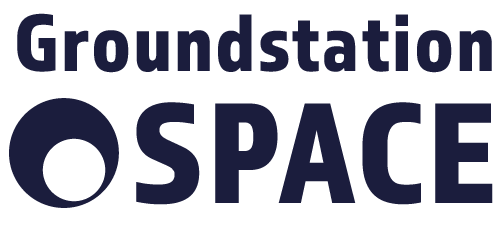Dutch contribution to Harmony radar mission

The European space agency ESA is exploring whether Harmony should become the tenth satellite mission in the European Earth Explorer programme. Dutchman Paco Lopez Dekker plays a key role in this process. As Principal Investigator (PI) of the mission and leader of a new Dutch “knowledge network,” he strives to increase the Netherlands’ contribution to the use of radar technology in space.
Harmony consists of two identical satellites that receive radar signals transmitted by ESA’s Sentinel-1 satellite. This results in valuable and highly detailed data on land (deformation, e.g. as a result of earthquakes and volcanic eruptions), water (the interaction between ocean and atmosphere and rising sea levels) and ice (changes in the volume and glacier deformation).
Lopez Dekker is the first Dutch PI of an Earth Explorer mission. This is a prestigious role that strengthens our scientific position in the world and offers concrete advantages for the Dutch space industry: “I am looking for reliable partners for this project close to home. The KNMI and the University of Twente are already on board. In the years to come, MetaSensing and Deltares will play a role in the preparations for the mission. Once the satellite is up and running in just under ten years, Dutch parties will be among the first who get to use the data it produces.”
Dutch radar technology
Besides the development of hardware for space missions, the applications of radar instruments are particularly interesting for the Netherlands. “The need for radar satellite data is growing,” Koop explains. “One major advantage of conducting measurements with radar instruments is that radar can penetrate clouds. For a rainy country such as the Netherlands, that is an important benefit. Radar data can help improve applications in the agricultural sector. Furthermore, we can use radar data to conduct research into other themes that are relevant for our country, such as the rising sea level and land deformation.”
The feasibility study for the Harmony mission will conclude in July of 2022. If it turns out that the satellite offers sufficient scientific added value and it is feasible from a cost perspective, its development can be greenlit. The launch is projected for 2029 or 2030.

ESA Earth Explorer Missions
Earth Explorers are research missions applying new observation techniques to respond to the needs of the scientific community in their quest to understand different aspects of the Earth system and the interactions that bind the system as a whole. Advancing science and technology, they address questions that have direct bearings on societal issues such as the availability of food, water, energy and resources, public health and climate change.
Three concepts, Daedalus, Harmony (formerly called Stereoid) and Hydroterra (formerly called G-Class), have spent the last two years being scrutinised as to their scientific, technical and budgetary feasibility to be ESA’s tenth Earth Explorer mission.
This step has now culminated in ESA’s Programme Board for Earth Observation (PB-EO) accepting ESA’s proposal, based on the recommendation from the Advisory Committee for Earth Observation (ACEO) and its own evaluation that Harmony should be taken forward to the next study phase.
This phase, Phase-A, includes further feasibility assessment after in-depth system definition, including the design of the satellite platform and instruments, flight operations, technology developments and how best to exploit the data.
Harmony mission to support Sentinel-1
Josef Aschbacher, Director of ESA’s Earth Observation Programmes, said, “Harmony is an exciting concept and we are thrilled to have it moving to the next step for further design consolidation and feasibility assessment. We expect that a firm decision on full implementation, meaning development through to launch and commissioning, will be taken in autumn 2022 by ESA Member States, upon completion of Phase-A activities.”
The Harmony concept comprises two identical satellites that would fly in convoy with a Copernicus Sentinel-1 satellite. Each Harmony satellite is being designed to carry a receive-only synthetic aperture radar as its main instrument. Working together with Sentinel-1’s radar, Harmony would provide data to measure small shifts in the shape of the land surface such as those related to earthquakes and volcanic activity, thereby contributing to risk monitoring. It would also allow for the study of 3D deformation and flow dynamics of glaciers at the rapidly changing marginal zones of the ice sheets for a better understanding of sea-level rise.
Sea surface temperature measurements
Both Harmony satellites would also carry a multibeam thermal-infrared instrument, which in the presence of clouds will enable the measurement of height-resolved cloud movements. In absence of clouds, this multibeam thermal-infrared instrument will measure sea-surface temperature differences.
Harmony would also be the first mission to provide data to improve our understanding of interactions between the air and the ocean surface by providing simultaneous measurements of wind, waves, currents, that together with measurements of sea surface thermal differences and cloud motion will enable an unprecedented view of the marine atmospheric boundary layer.
In essence, Harmony addresses key science questions in several domains. Its observation concept enables unique measurements over timescales ranging from tens of milliseconds (to measure ocean currents) to years (to measure solid Earth surface motion).
Dr Aschbacher added, “Though the recommendation of ACEO had also included Daedalus as a potential Phase-A candidate, it was not proposed for selection due to strict adherence to the cost constraints established by the PB-EO. Nevertheless, ACEO commended both Daedalus and Hydroterra mission concepts for the exploratory nature of their observations and potentially ground-breaking science objectives.
“ESA plans to explore options to further study the Daedalus concept in a different framework, through potential international cooperation. Meanwhile, some risk-reduction studies will continue on both Daedalus and Hydroterra in order to further mature each concept.”
Original post by the Netherlands Space Office here













